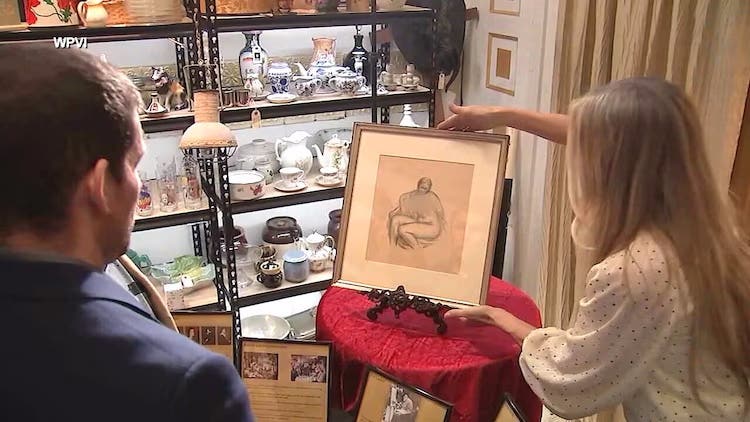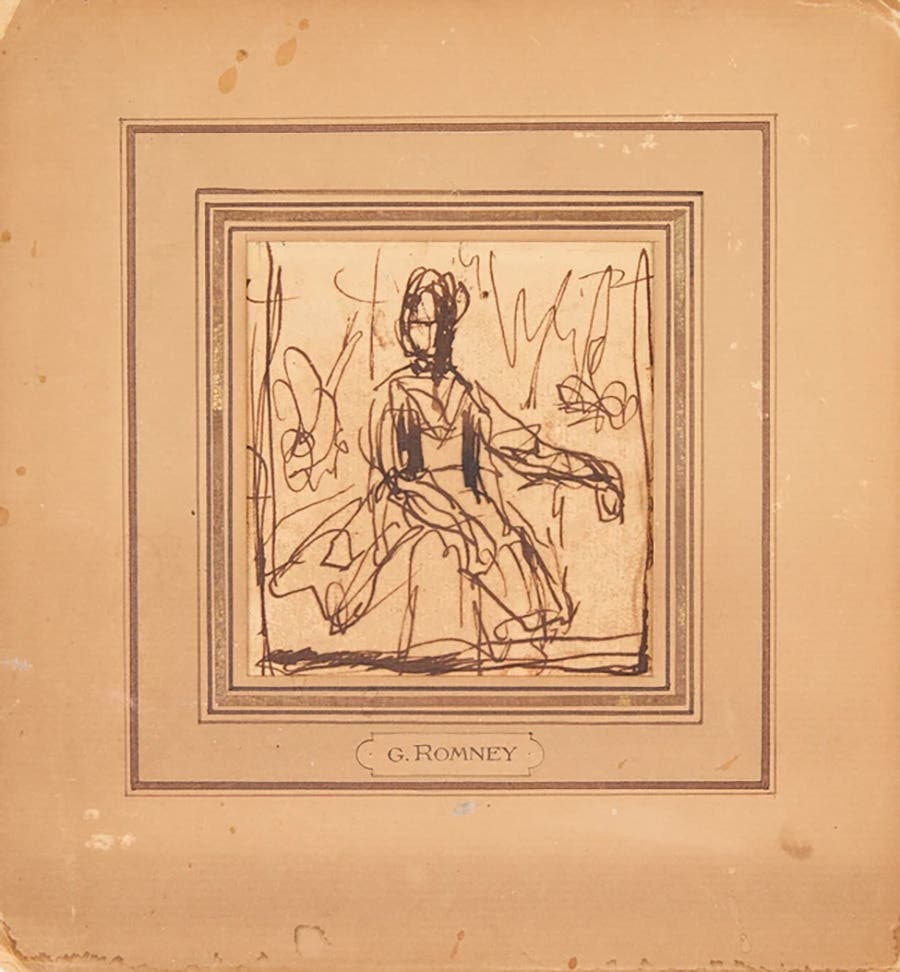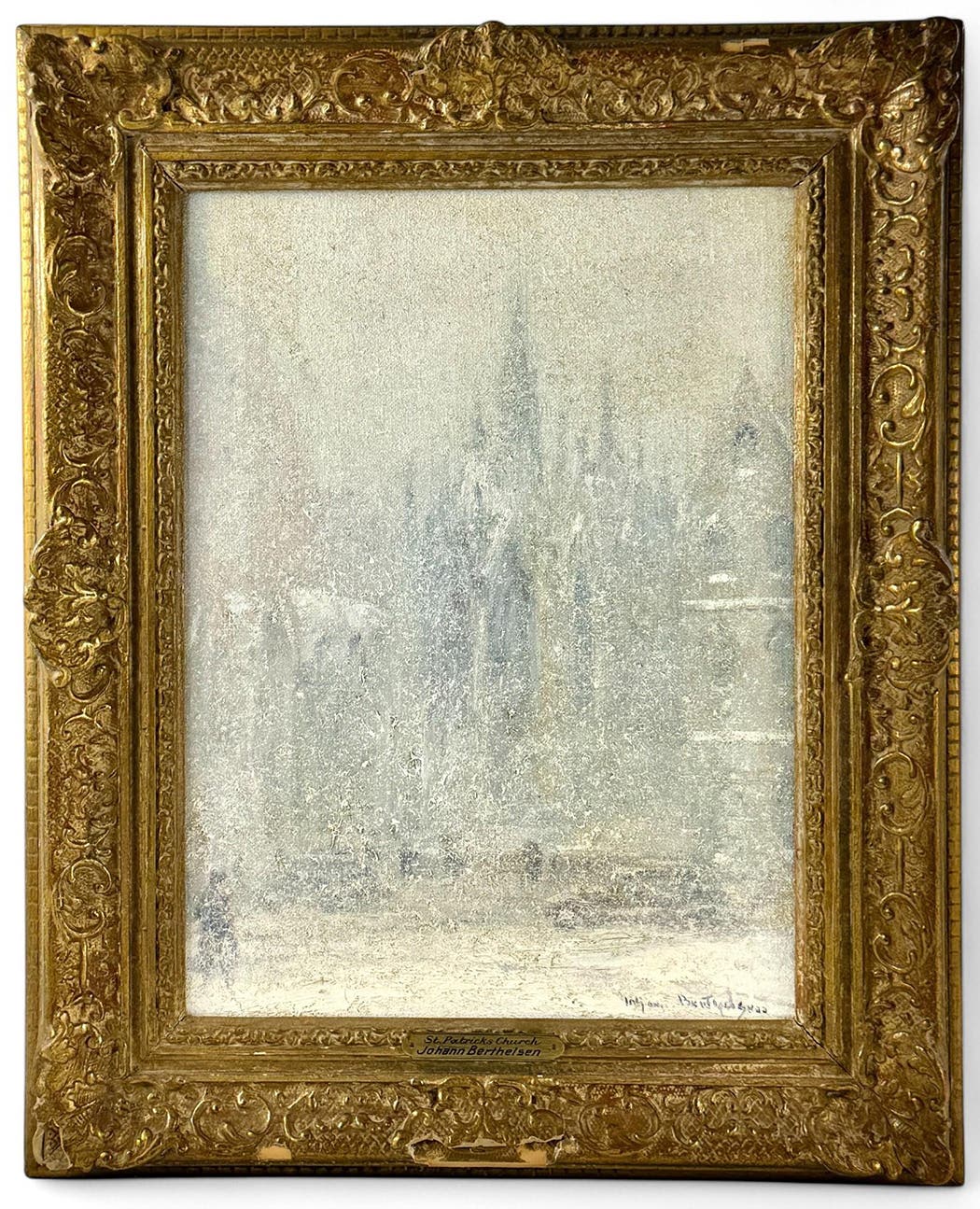Decorative painting inspires lesson in dating art
As Dr. Anthony J. Cavo teaches us in this extended Ask the Experts assessment, several elements within decorative paintings lend themselves to determining the possible age of a piece.
Q I am hoping your staff can give me some information on a painting I recently purchased at a sale. There is no signature on the painting itself, however there is a name on the side of the painting, as you can see by the enclosed photo.
The painting itself is in great shape and I believe done by a good artist. Because of the windmill, I think this is a Dutch cottages scene, but I’m not sure. I am not sure of the age of the painting.
Any help you can give me as to age, origin and artist would be most appreciated.
— J.A., Green Bay, Wis.
Decorative Painting Reveals Truth of Age
A When examining a painting, the back can often provide a great deal of information in determining age and authenticity. The stretcher construction is an important consideration in dating paintings although not an absolute as older paintings are sometimes placed on newer stretchers during restoration. This type of “restoration” is not advised unless the stretcher cannot be salvaged.
In square and rectangular paintings, the stretcher is composed of four wood bars (stretcher bars) over which the canvas is stretched then fastened. Sometimes there is a fifth bar in the center used to stabilize the stretcher. Older paintings utilized dark wood for stretchers. The wood becomes much darker over time due to oxidation whereas contemporary paintings use light-color wood.
Older stretchers almost always utilize keys, which are small triangular shards of wood wedged into the corners at the back of the painting; these are used to tighten the canvas. Some newer paintings may also use keys. The construction of the stretcher is also an important consideration. Generally, stretchers with mitered corners were constructed during the late 19th century to the present, whereas stretchers with boxed corners are earlier. The stretchers on your painting are light in color and although your photos do not reveal the construction, I’m sure the corners are mitered – all indications that this is a contemporary painting.
Fasteners and Stretchers
The canvas on your painting is fastened to the stretcher with the use of staples, which indicates the work was done sometime after the 1940s. Prior to the 1940s the canvas was fastened to the stretcher with nails that resemble tiny carpet tacks. (On very old paintings these are hand-forged.)
This is not an absolute, however, because older paintings are often re-stretched and relined during restoration at which time the canvas may be refastened by staples. If the original stretcher is used during the restoration there will be nail holes in the wood beneath the edges of the canvas from when it was originally stretched.
The back of the canvas on old oil paintings will be dark and a bit lighter beneath the stretcher bars where the canvas has been protected by the stretcher, to a certain degree, from oxidation. The bottom horizontal bar will be the dirtiest part of the stretcher often with a build-up of dust between the bar and the canvas. Again, this is not an absolute. If the painting has been restored it may have been lined, also known as relining. Relining the back of the original canvas with linen stabilizes and flattens the original canvas. If the painting has been relined the back will be clean and light in color with an overall new appearance. There is still much debate on the subject of relining with persuasive pros and cons.
Indications of Age Through Crackling and Crazing
If a painting is on artist board (Masonite) it was produced after 1924, although a Masonite-like artist board was produced as early as 1898 by hot-pressing waste paper.
When looking at the front of a painting remember that if a painting is “old” it should look old. Examine the painting for crackling and crazing and for dark tones. Older paintings are done in oil paint, which has been used since the 13th century, whereas newer paintings may be done in either oil or acrylic paint, which has been used since the 1950s. Familiarize yourself with the difference in appearance between old and new oil paintings and between oil and acrylic paintings; oil paintings are more translucent. Hands-on research is the best way of learning and protecting yourself from buying a painting that has been misidentified as antique.
You are correct in your assumption that your painting is Dutch, although not because it depicts a windmill. I’m certain the writing on the side is Dutch and is the title of the painting rather than the name of the artist. The word “Boerde” (farmer) or “Boer de” (peasant) is rather clear. The second word appears to be “Huisje” (cottage) or “Huis” (home) and so would indicate either a peasant’s or farmer’s home or cottage – both of which fit the image very well. The unpainted portion of the canvas is white, the wood of the stretcher is light in color without any indication of oxidation, and the canvas is fastened to the stretcher with staples. These findings indicate your painting is less than 40 years old and without the name of an artist, of decorative value only.
Photographing a Painting
I will share something I learned many years ago while trying to photograph a dirty old painting.
Sounds intriguing, huh? The image wasn’t X-rated, rather the surface of the painting itself was very dirty. In addition to being dirty, old paint pigments can become darker through the years and the surface of old paintings can darken as a result of the varnish that was applied. I discovered that on old paintings with a great deal of darkening and a century or more of surface grime there is a way to view the painting in more detail. Photographing a painting head-on with a flash usually causes complete wash-out of the image and a great deal of reflection.
Skip the Flash
An early 19th century painting was photographed head on without the use of a flash as seen on the
left. The image on the right shows much greater detail in addition to colors that could not be seen beneath the years of filth and darkened varnish. The image was taken with the use of a flash at a 45-degree angle rather than head on (I used my cell phone). Although the difference may not be as apparent in a black and white image, when viewed in color the second image shows the second woman to be dressing in green – a color that is not seen at all when looking at the painting in normal light. If you are considering the purchase of an old painting but are troubled by the dark appearance, use your cell phone to take a quick shot with a flash from a 45-degree angle. You may be surprised by what is hidden from the naked eye.
Remember, never attempt to clean a painting yourself; instead, find a reputable professional trained in the art of restoration. Check to see if they are or have been affiliated with museums or noted collections. An antique painting will add a great deal of character to your home and typically will increase in value throughout the years.








